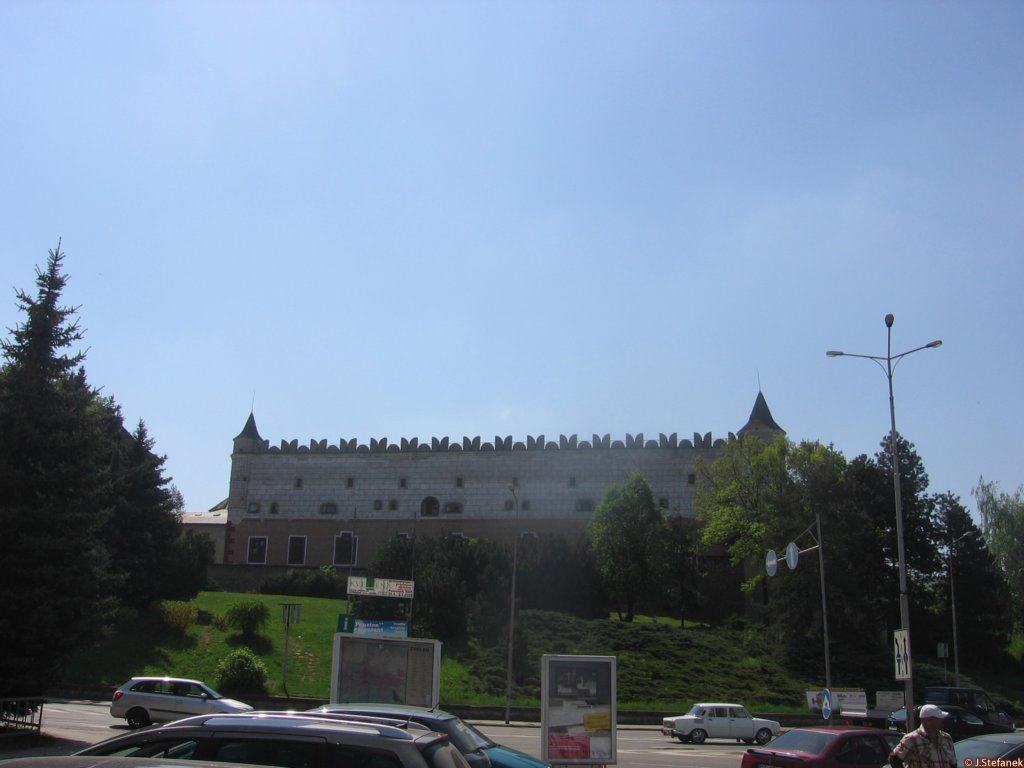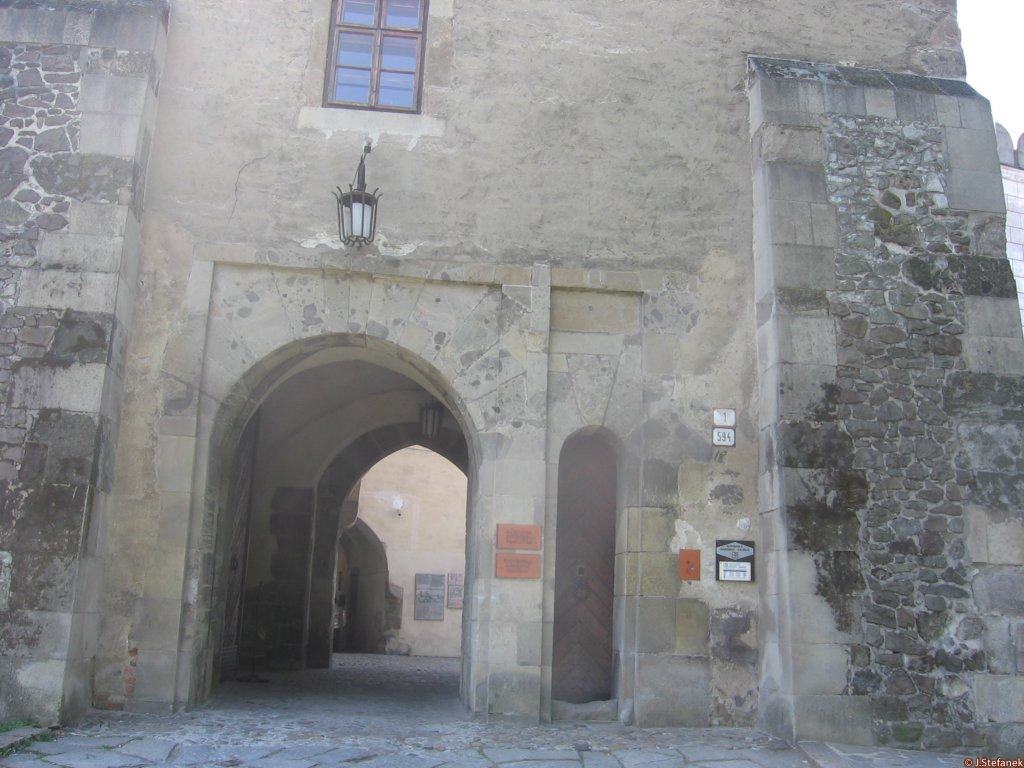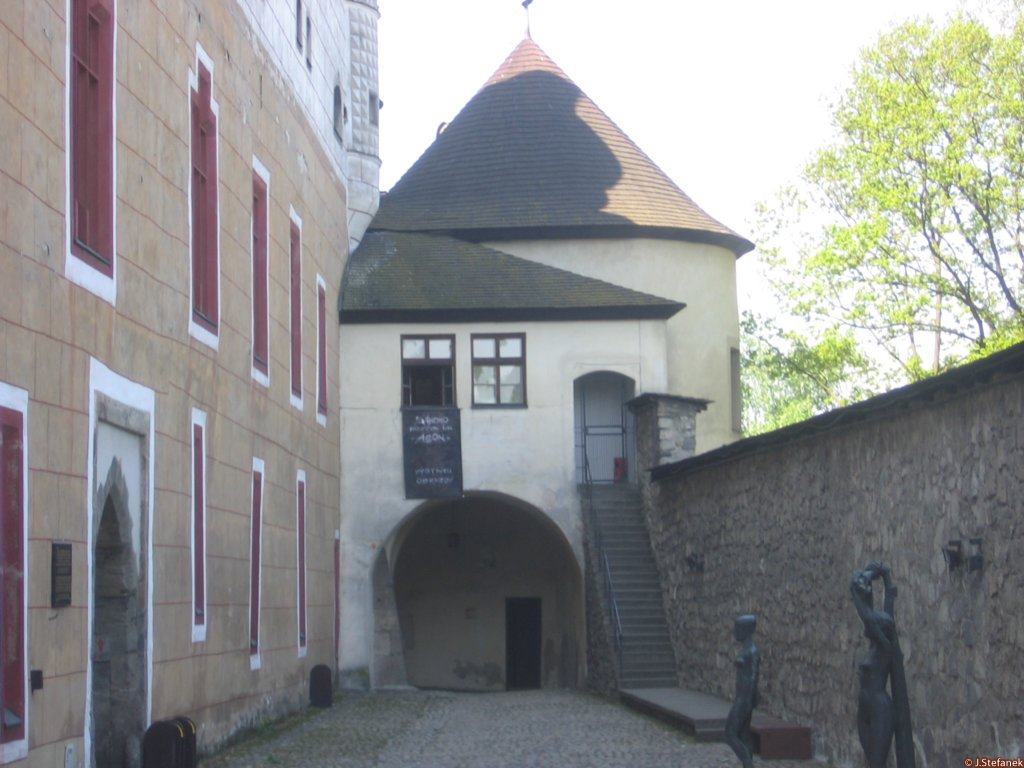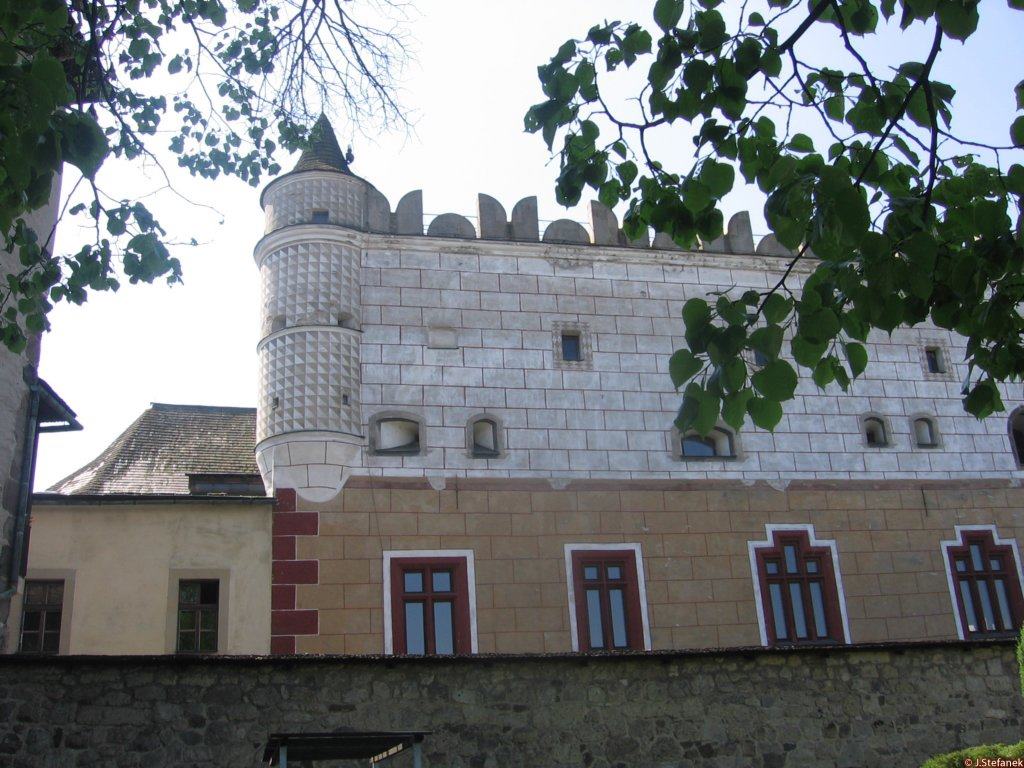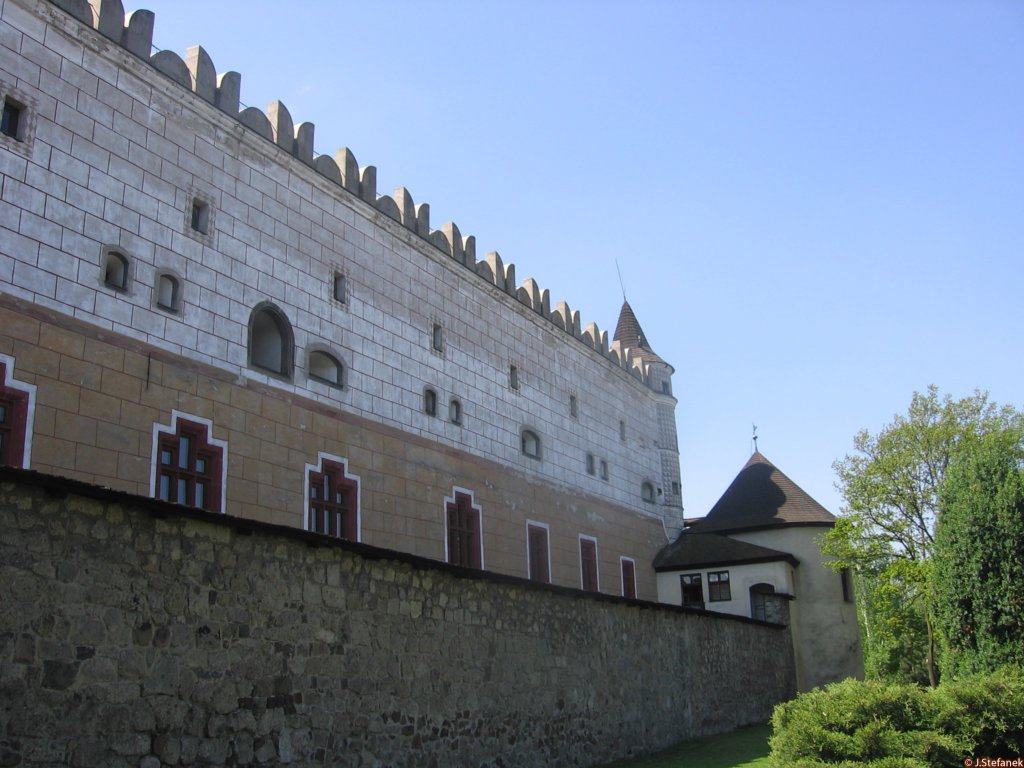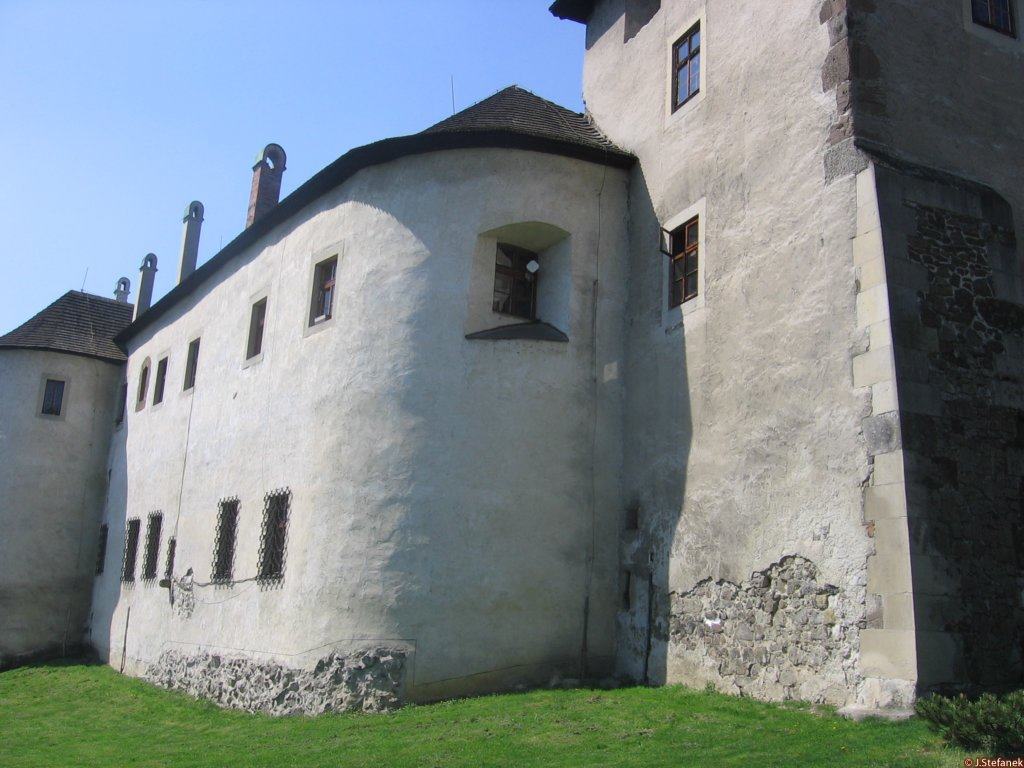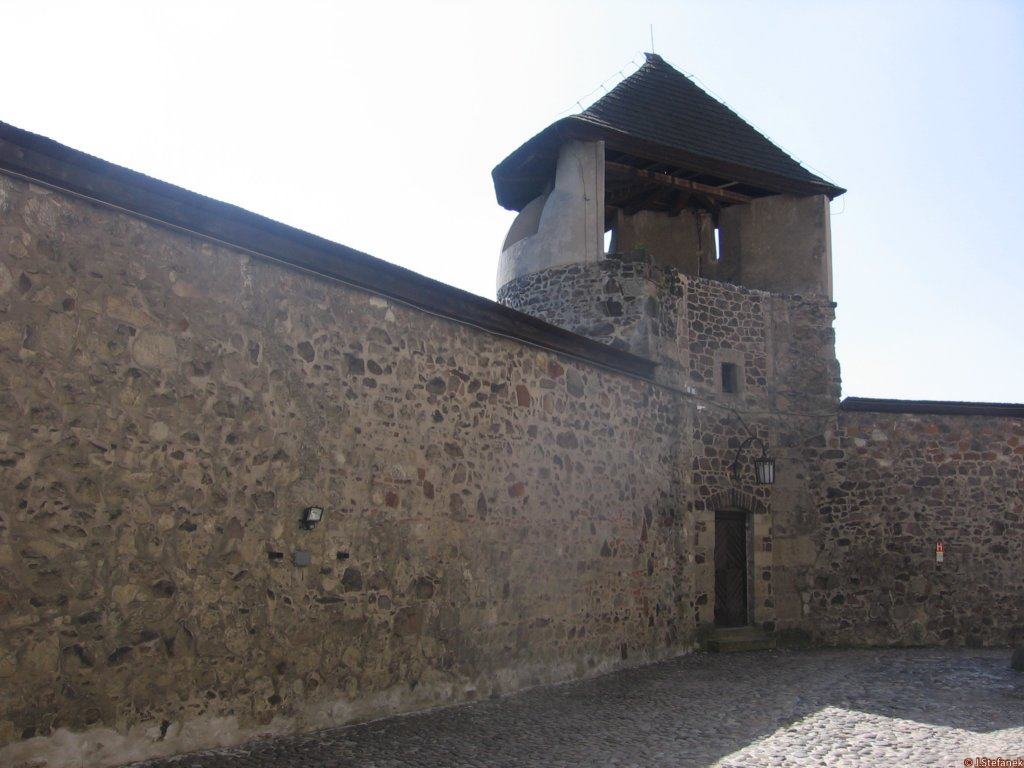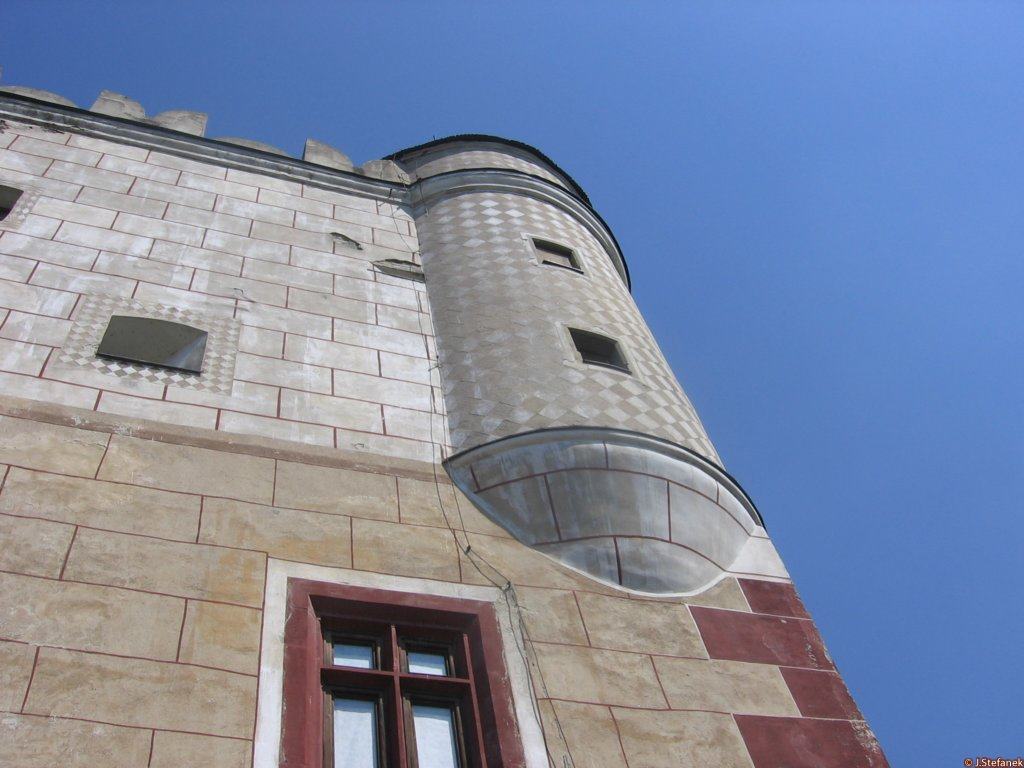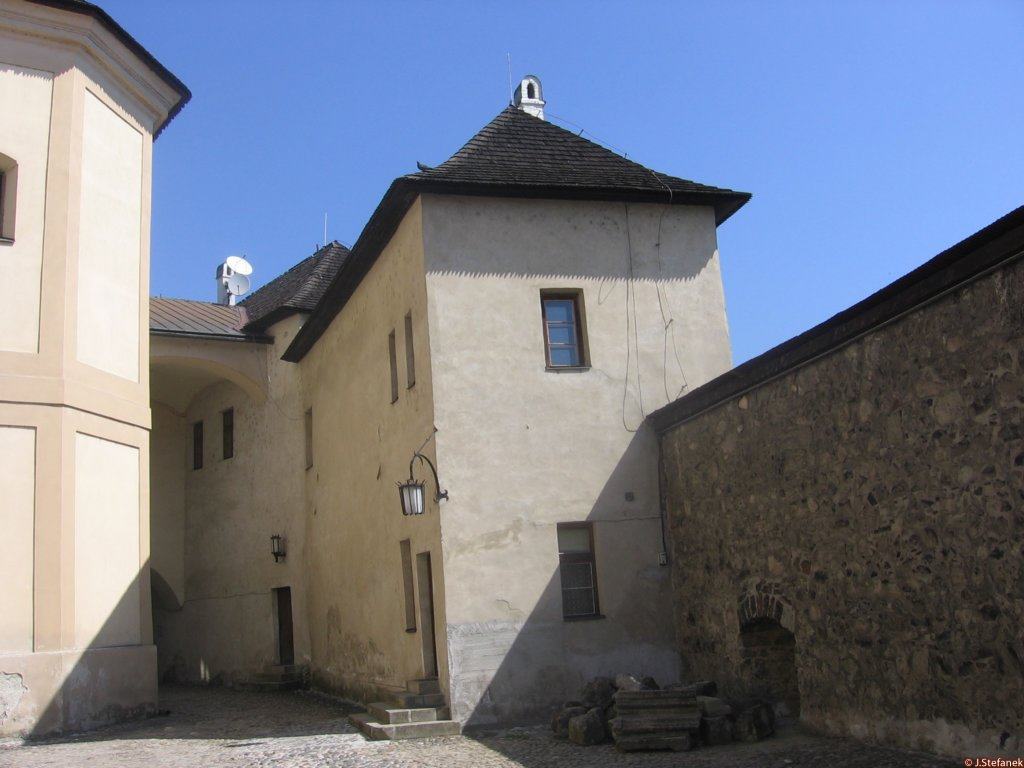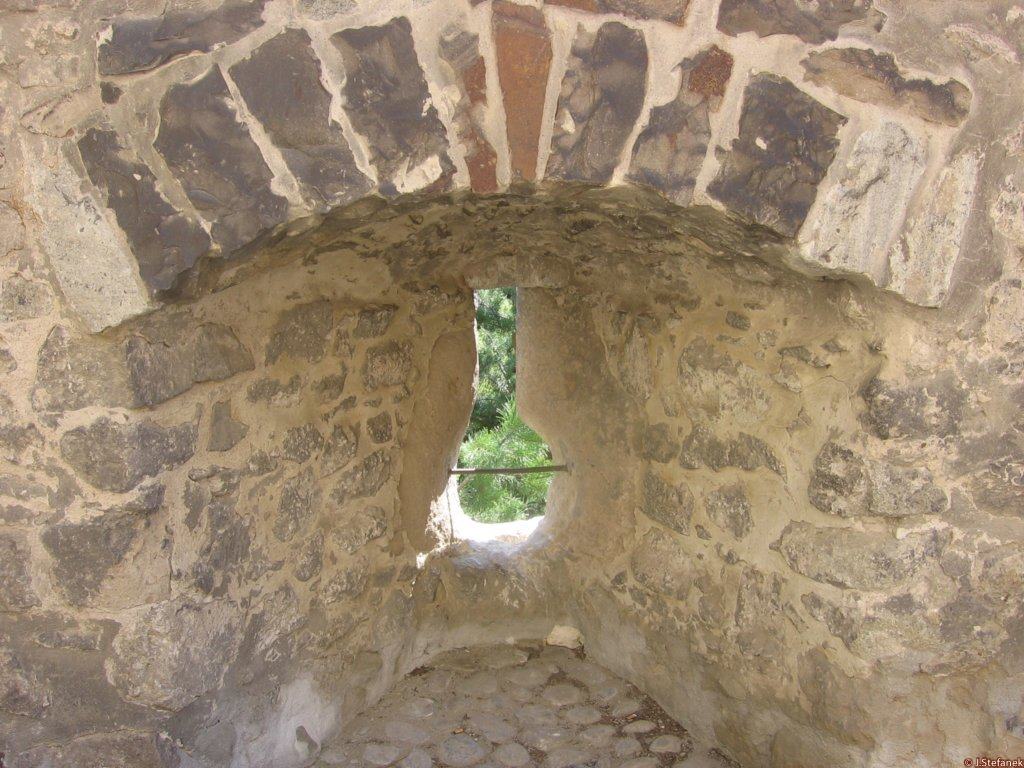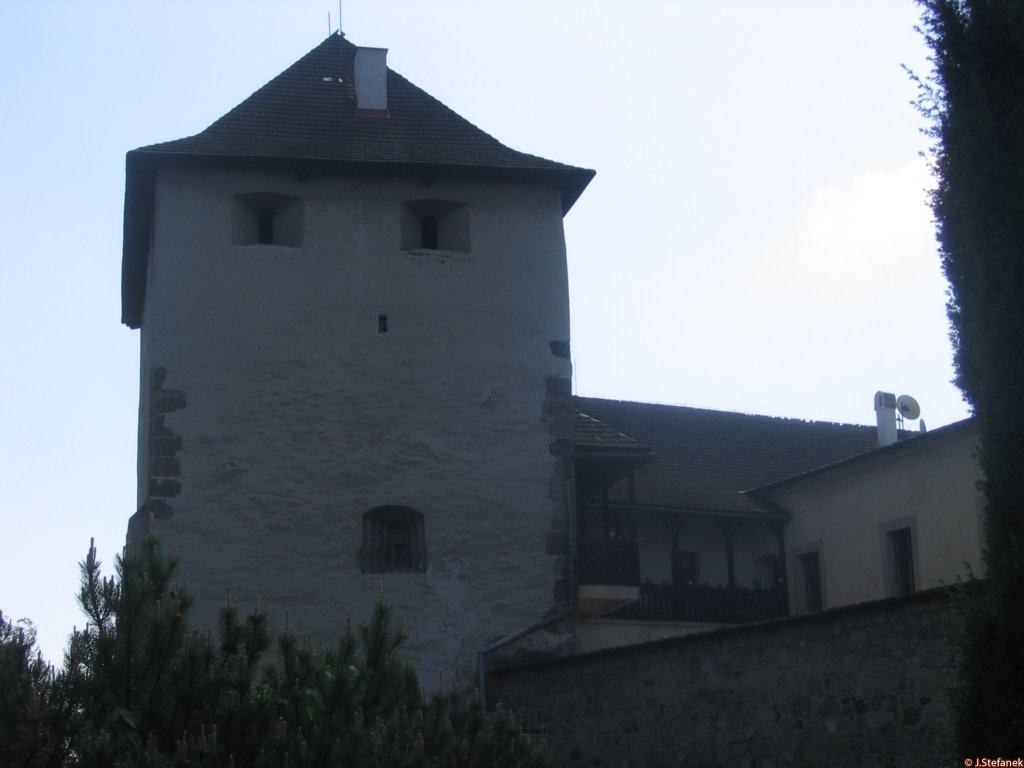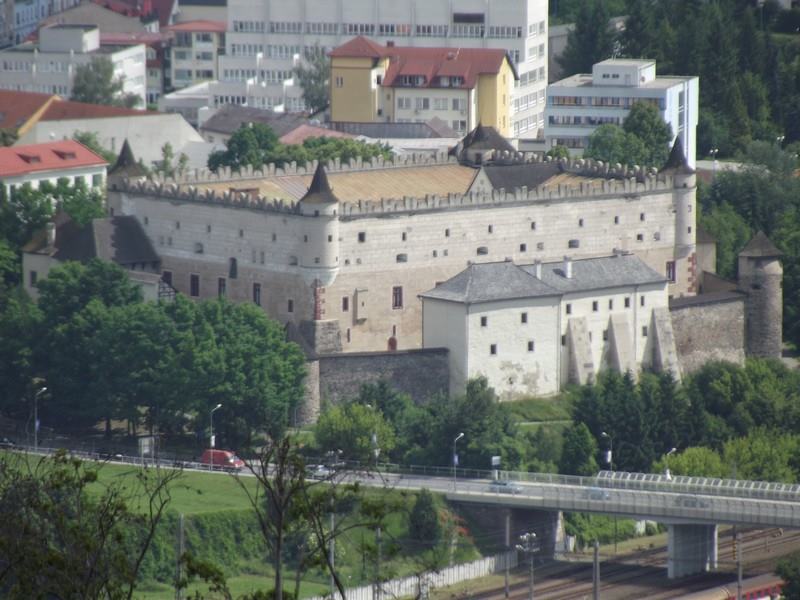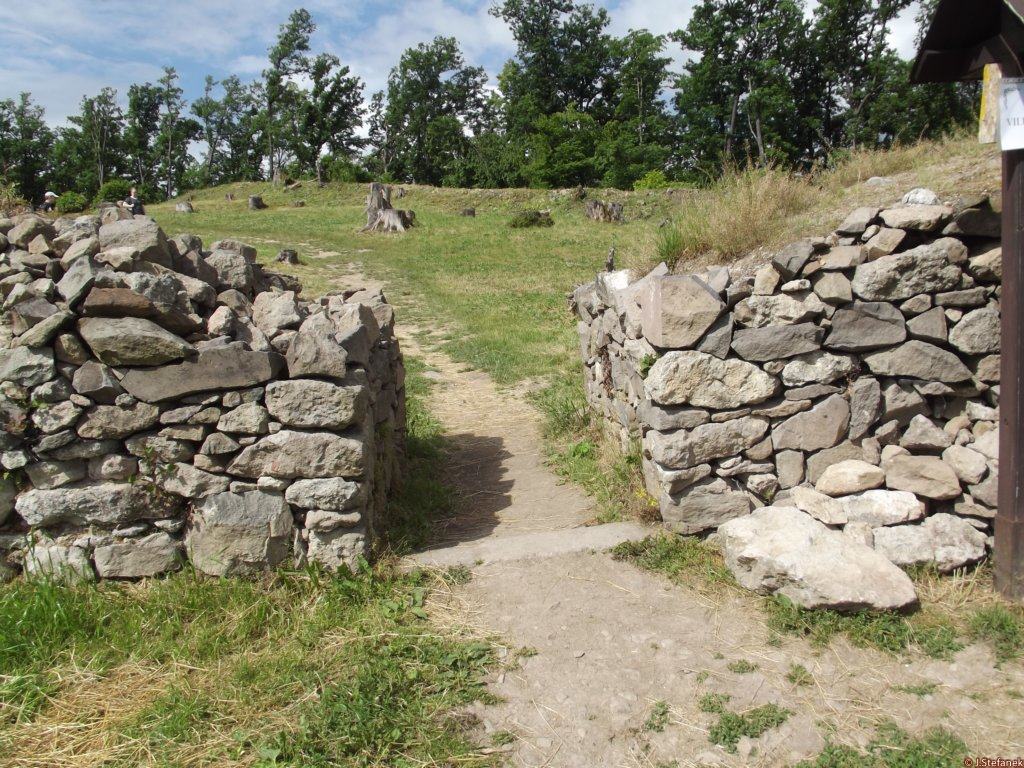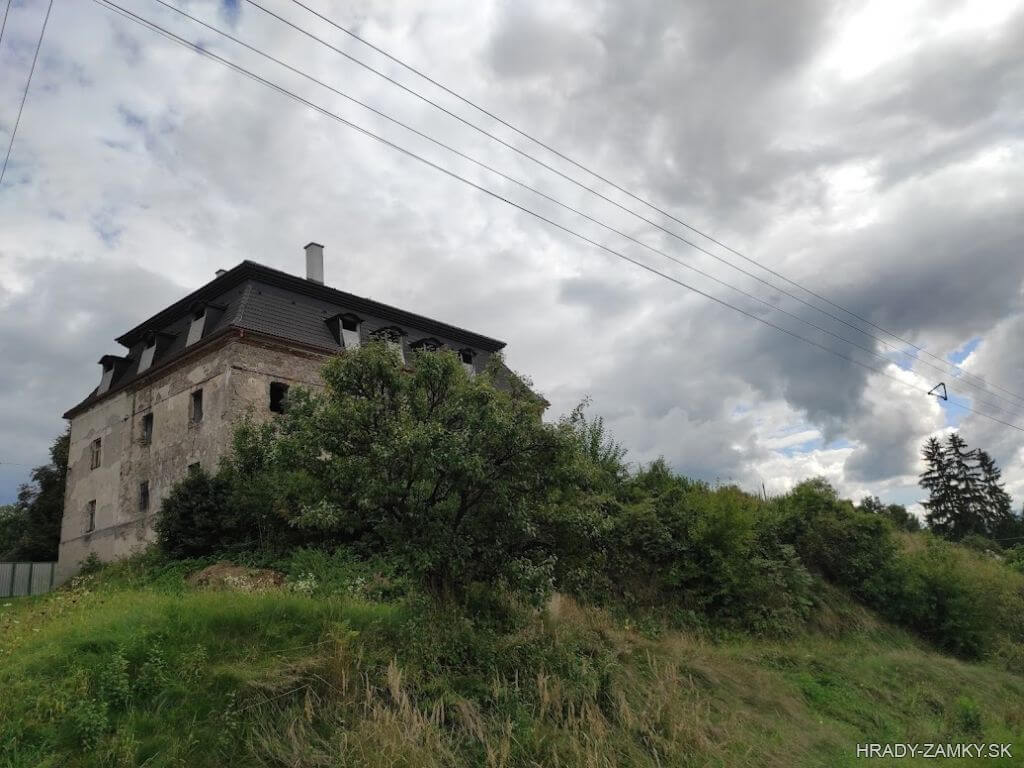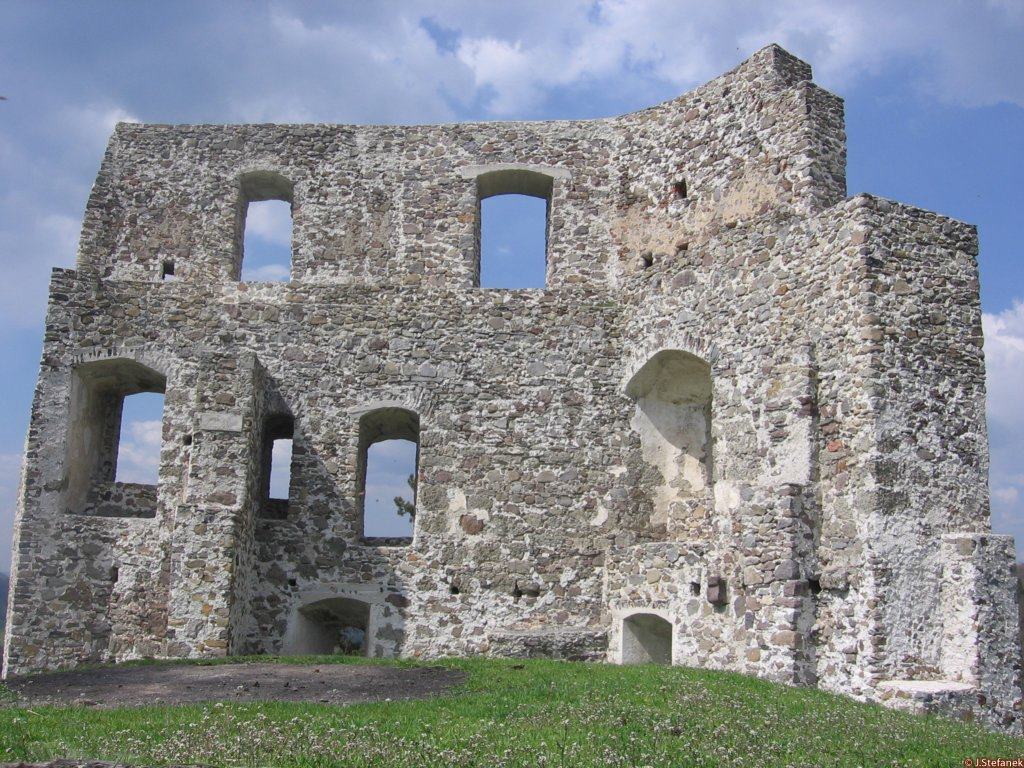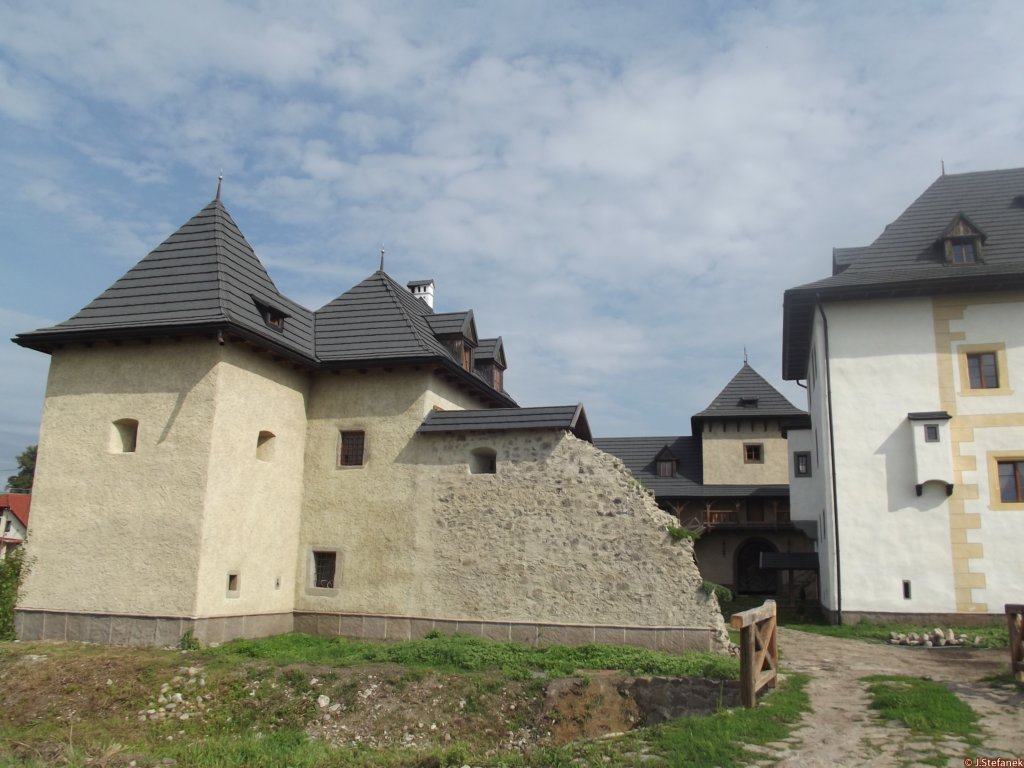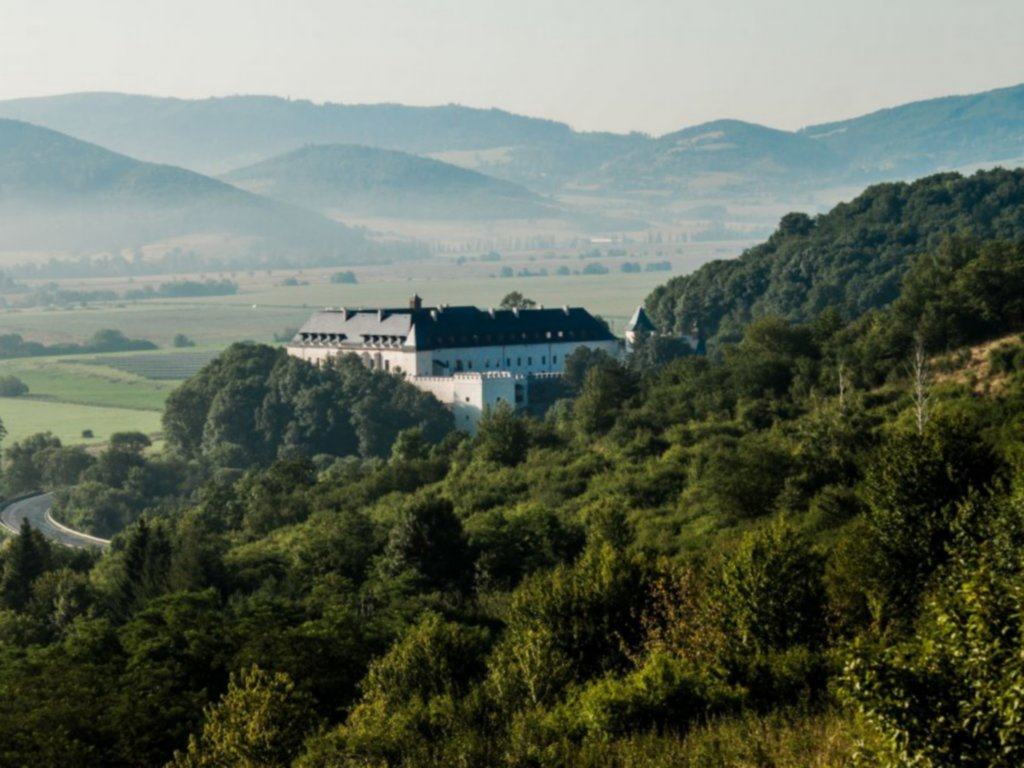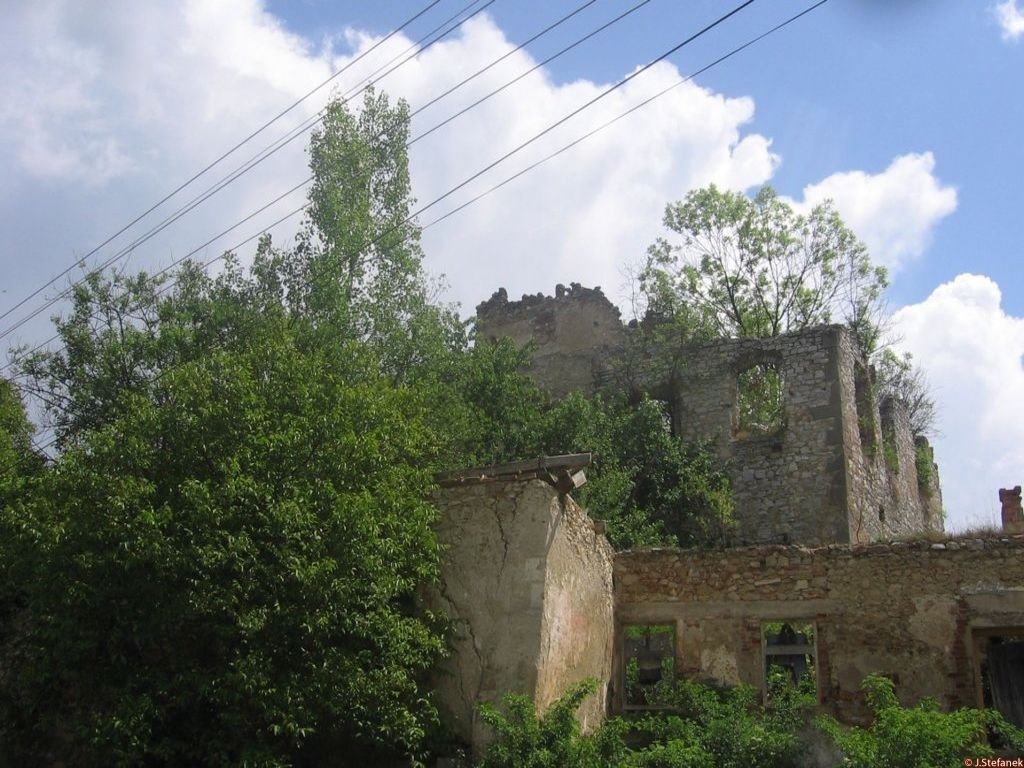Zvolen castle
Zvolen Banská Bystrica county Slovakia
castle, chateau
Zvolenský hrad
Zvolen Banskobystrický kraj Slovakia
hrad, zámok
Preserved, originally gothic castle with renaissance superstructure on the elevated terrace of Zvolen basin, situated above the river Slatina in the center of Zvolen city
Zachovaný hrad na vyvýšenej terase Zvolenskej kotliny, situovaný nad riečkou Slatina v centre mesta Zvolen
Previous names
Zolium, Zowolun, Zoulum, Zoulun, Zolym, Zolyum, Zolon, Zolum, Zolen, Zowolium, Zuolum, Zolom, Zolyom, Antiyuum Zolium, Veterorzolium, Zwolen, Starý Zwolen, Zólyom, Altszuhl, Altsohl, Veterosolium, Vetusolium, Sohl
Roads
Zvolen castle is located right in the center of Zvolen, near the railway station. It is very easy to access. It is just a short distance from the intersection of Dobronivská and T.G. Masaryk streets. From Masaryk Street just behind the intersection there is a turn to the right, where is a paid parking lot right next to the castle.
Zvolenský hrad sa nachádza priamo v centre mesta Zvolen, neďaleko železničnej stanice. Je veľmi ľahko prístupný. Je len kúsok od križovatky ciest Dobronivská a T.G. Masaryka. Z ulice Masaryka hneď za križovatkou je odbočka vpravo, kde je platené parkovisko priamo pri hrade.
Description
Interesting is the unusual solution of block building with a high attic and on the corners with circular bay windows. On the façade, there is a Gothic style from the 14th century - red-white blocking and edging of three-part windows. Renaissance superstructure - with the altered composition of the cladding of the facade, it retained distinctive elements of anti-Turkish defense, especially diverse firing points. There is a fortification around the castle. On the eastern side of the courtyard is a chapel, whose importance underlines the architecturally richly designed entrance portal with a pillared hall. The castle is reconstructed and restored.The Slovak National Gallery is located in the castle interior. Gothic sediments with tracery and original frescoes have been preserved in the arched passage of the castle. The chapel with the architectural elements of the late Gothic style, the knight's hall and the rooms vaulted on the middle column occupy a special place. Also impressive is the younger Baroque hall from the 18th century with wooden painted coffered ceiling.
Zaujímavé je nezvyčajné riešenie blokovej stavby s vysokou atikou a na nárožiach s kruhovými arkiermi. Na priečelí sa zachovala gotická úprava zo 14. storočia - červeno-biele kvádrovanie a lemovanie trojdielnych okien. Renesančná nadstavba - so zmenenou kompozíciou kvádrovania fasády si zachovala výrazné prvky protitureckej obrany, najmä rôznorodé strieľne. Okolo hradu je opevnenie. Na východnej strane nádvoria je kaplnka, ktorej význam podčiarkuje architektonicky bohato riešený vstupný portál so stĺpovou predsieňou. Hrad je rekonštruovaný a obnovený.V interiéri hradu má sídlo Slovenská Národná Galéria. V klenutom priechode hradu sa zachovali gotické sedílie s kružbami a pôvodné fresky. Z reprezentačných priestorov osobité miesto zaberá kaplnka s architektonickými prvkami začínajúcej sa neskorej gotiky, ďalej rytierska sieň a miestnosti zaklenuté na stredný stľp. Impozantná je aj mladšia baroková hala z 18. storočia s dreveným maľovaným kazetovým stropom.
Plan
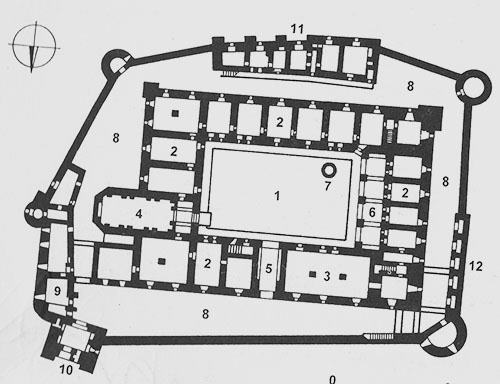
Legend to the ground plan
- 1-courtyard with a porch
- 2-residential and farm wings
- 3-large Gothic hall
- 4-originally two-storey chapel
- 5-passage
- 6-arcade
- 7-well
- 8-fortified fort
- 9-guard house
- 10-entrance tower
- 11-captain's house
- 12-porch with arcades
Legenda k pôdorysu
- 1-nádvorie s pavlačou
- 2-obytné a hospodárske krídla
- 3-veľká gotická dvorana
- 4-pôvodne dvojpodlažná kaplnka
- 5-prejazd
- 6-podlubie
- 7-studňa
- 8-opevnené predhradie
- 9-strážny dom
- 10-vstupná veža
- 11-kapitánsky dom
- 12-veranda s arkádami
History
The original four-winged building was built by King Louis I. the Great, probably in the years 1360-82 on the site of a small church. In 1424, King Sigismund donated the castle (and the Zvolen county) to his wife Barbora. In the years 1440-1450 and 1453-1462, the castle was the seat of Ján Jiskra. In 1462, after an agreement with the king, Jiskra's troops left the castle and the castle fell to the king again. In 1490, together with the mining towns and Zvolen County, it was given to Queen Beatrix. Later, the castle was owned by a wealthy Thurz family, who in 1490-1510 built an external fortification with bastions and also a captain's house. During the renaissance reconstruction in 1548, they removed the upper parts of both towers and created two floors of firing positions in the superstructure of the palace.
The impending Turkish danger required further strengthening of the castle by a massive cannon bastion on the west side. After the retreat of the Turks, the importance of the fortress decreased and in 1605 the castle fell into the hands of Štefan Bocskaya and in 1619 Gabriel Bethlen. A few years later, in 1626, the castle was owned by the Eszterházy family, who rebuilt it into a noble residence. Turkish troops rarely got to the castle, but in 1644 the castle was occupied by Juraj I. Rákóczi and in 1678 the castle was handed over to Imrich Thököly without a fight. In 1682, insurgents reached the walls until in 1703, they were expelled by the imperial troops led by General Schlický. In November 1703, Mikuláš Bercsényi appeared with the castle with about 15,000 soldiers. Simon Forgách's imperial army opposed him. After a fierce battle, the rest of the imperial army closed in the castle, from where Count Forg had secretly fled at night. The castle was then occupied by Bercsényi's rebel troops and owned until 1708, when the Turks were already in retreat throughout the territory.
When the seat of the county was transferred from Zvolen to Banská Bystrica, the castle lost its former significance and when the state bought it in 1805, it served various purposes - barracks, offices, schools, warehouses. In the years 1894-1906, the castle was repaired under the leadership of the Hungarian Monuments Commission. After 1956, there was an extensive monumental restoration, which returned the Gothic-Renaissance appearance to Zvolen Castle.
Pôvodný štvorkrídlový objekt dal postaviť kráľ Ľudovít I. Veľký pravdepodobne v rokoch 1360-82 na mieste malého kostola. V roku 1424 daroval hrad (aj zvolenskú župu) kráľ Žigmund svojej manželke Barbore. V rokoch 1440-1450 a 1453-1462 bol hrad sídlom Jána Jiskru. V r.1462 po dohode s kráľom Jiskrove vojská hrad opustili a hrad pripadol znovu kráľovi. V roku 1490 ho spolu s banskými mestami a Zvolenskou župou dostala kráľovná Beatrix. Neskôr bola vlastníkom hradu bohatá rodina Thurzovcov, ktorí v r.1490-1510 vybudovali aj vonkajšie opevnenie s baštami a taktiež aj kapitánsky dom. Pri renesančnej prestavbe v r.1548 odstránili horné časti oboch veží a v nadstavbe paláca vytvorili dve podlažia palebných pozícií.
Blížiace sa turecké nebezpečenstvo si vyžiadalo ďalšie posilnenie hradu a to mohutným delovým bastiónom na západnej strane. Po ústupe Turkov význam pevnosti poklesol a hrad sa v r.1605 dostáva do rúk Štefana Bocskaya a v r.1619 Gabriela Bethlena. O pár rokov neskôr, v r.1626, hrad vlastnili Eszterházyovci, ktorí ho prebudovali na šľachtické sídlo. Turecké vojská sa k hradu dostali len zriedkakedy, avšak v r.1644 hrad obsadil Juraj I. Rákóczi a v r.1678 hrad bez boja odovzdali Imrichovi Thökölymu. V r.1682 sa k hradbám dostávajú povstalci, až kým ich v r.1703 nevyhnali cisárske vojská na čele s generálom Schlickom. V novembri 1703 sa pri hrade objavil Mikuláš Bercsényi s asi 15 tisíc vojakmi. Proti nemu sa postavilo cisárske vojsko Šimona Forgácha. Po krutej bitke sa zvyšok cisárskeho vojska uzatvoril v hrade, odkiaľ gróf Forgách v noci tajne utiekol. Hrad potom obsadili Bercsényiho povstalecké vojská a vlastnili ho až do r.1708, keď už Turci boli na celom území na ústupe.
Keď sídlo župy preniesli zo Zvolena do Banskej Bystrice, stratil hrad svoj niekdajší význam a keď ho štát v roku 1805 odkúpil, slúžil na rôzne účely - kasárne, úrady, školy, sklady. V rokoch 1894-1906 hrad opravili pod vedením uhorskej pamiatkovej komisie. Po r.1956 došlo k rozsiahlej pamiatkovej obnove, ktorá Zvolenskému hradu vrátila goticko-renesančnú podobu.
Myths and legends
About King Louis and the Bear
The Zvolen forests have long been a popular hunting ground for Hungarian kings. Rich in wildlife and beautiful natural scenery lured many monarchs and nobles on adventures. One day, King Louis I also went to such a hunt. The king's heart leapt with joy as he had an extraordinary opportunity. However, he can attack the injured and exhausted animal himself. And all these eyes will roll when they learn that they have a king who killed a bear with his own hands and without help. The king, armed only with a spear, lunged at the animal. However, he overestimated his strength, because the bear was not at all as exhausted as it seemed at first glance. The attack repeated and maybe he would have killed the dear King Louis, if he had not been lucky from hell. At the last moment, his faithful servants came to his aid. Out of gratitude for saving lives, and perhaps as a sign of humility before the forces of nature, King Louis I had a hunting lodge built near Zvolen.
O kráľovi Ľudovítovi a medveďovi
Zvolenské lesy boli oddávna obľúbeným poľovným revírom uhorských kráľov. Bohaté na zver i krásne prírodné scenérie lákali nejedného panovníka i veľmoža na dobrodružstvá. Jedného dňa sa na takú poľovačku vybral aj kráľ Ľudovít I. Ako tak blúdi lesom, zbadal na čistinke zraneného medveďa. Kráľovi poskočilo srdce od radosti, keďže sa mu naskytla neobyčajná príležitosť. Na zranené a vyčerpané zviera predsa môže zaútočiť aj sám. A to budú všetci oči vyvaľovať, keď sa dozvedia, že majú kráľa, ktorý vlastnými rukami a bez pomoci zabil medveďa. Kráľ, ozbrojený len oštepom, sa vrhol na zviera. Precenil však svoje sily, pretože medveď nebol vôbec taký vysilený ako sa na prvý pohľad zdalo. Útok opätoval a možno by bol aj milého kráľa Ľudovíta zabil, keby ten nemal z pekla šťastie. V poslednej chvíli mu totiž prišli na pomoc jeho verní sluhovia. Z vďačnosti za záchranu života, a možno aj ako znak pokory pred silami prírody, dal kráľ Ľudovít I. pri Zvolene postaviť poľovnícky zámok.
Useful information
Opening hours and admission
Otváracia doba a vstupné
External links
Nearby castles
